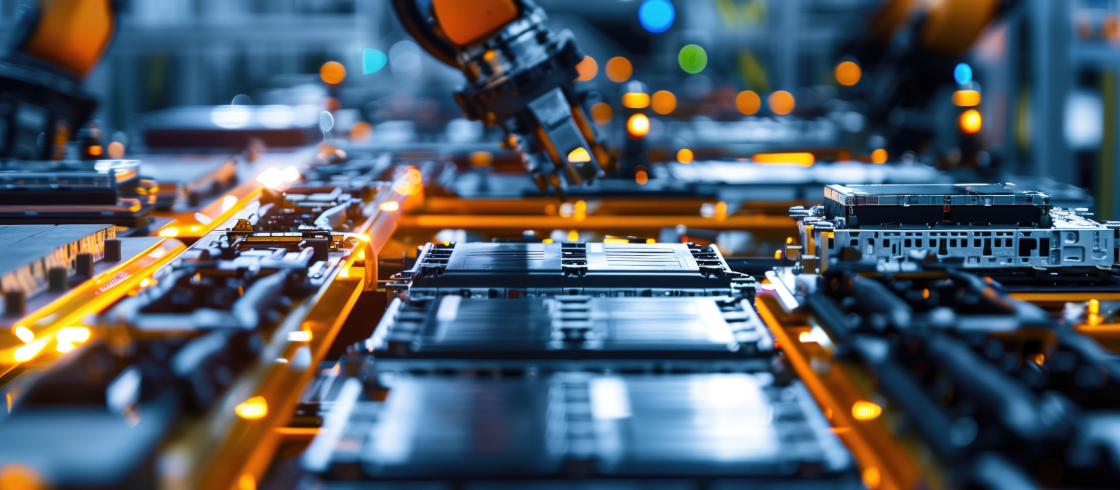The 6.0-magnitude earthquake that struck southern Taiwan on Tuesday had only a minimal impact on the operations of Taiwan Semiconductor Manufacturing Co., the world’s leading semiconductor foundry. However, the event raised renewed concerns over the supply chain impact of future potential disasters in the country.
Taiwan Quake Spares TSMC But Rattles Supply Chain Concerns
Feb 10, 2025 4:56:17 PM / by Supplyframe
The announced 10% U.S. tariffs for Chinese imports will increase electronic component pricing and upon the entire electronics supply chain. Consider PCBs for China accounts for more than half of the global market. The hyper growth AI data center segment is reliant on high-layer-count PCBs. China represents over a third total production. Chinese firms also enjoy upward of 60% market share for other advanced PCBs in artificial intelligence servers but for a myriad end markets. While AI gets all the attention—worldwide aerospace & defense demand for PCBs is growing markedly and electronic component sourcing in the space is in China-Zero verses China-Plus-One modes.
The Commodity IQ Inventory Index fell to less than half of the pre-pandemic baseline across all electronic component commodities. Demand softness outside of the robust growth in the high-performance compute sector resulted in both passive and semiconductor device manufacturers reducing capacity utilization, with some passive players having moved to below 50% and semiconductor makers to between 65% and 85%. Coupled with front-loading in advance of import and export tariff expansions, component buyers are advised to be on the lookout for any significant demand increases as the market will tighten quickly.
Connector Suppliers Warn of Possible Constraints
Feb 10, 2025 4:53:17 PM / by Supplyframe
Short lead-time connector orders, particularly for high-speed connectors, are to avoided. Current lead times for these devices could easily double from 8 weeks. The Asia-Pacific region continues to account for about half of global connector production. And, although shrinking year-on-year by single-digit percentages for the last several years – China remains the dominate player with about 30% market share, heightening concerns in the current China-Zero sourcing environment. The Commodity IQ Inventory Index for connectors is forecast to hover just below the baseline through Q2.
Short lead-time connector orders, particularly for high-speed connectors, are to avoided. Current lead times for these devices could easily double from 8 weeks. The Asia-Pacific region continues to account for about half of global connector production. And, although shrinking year-on-year by single-digit percentages for the last several years – China remains the dominate player with about 30% market share, heightening concerns in the current China-Zero sourcing environment. The Commodity IQ Inventory Index for connectors is forecast to hover just below the baseline through Q2.
The Commodity IQ Demand Index for resistors is projected to increase meaningfully into Q2 2025, recovering from its contraction from Q4 into Q1 2025. Pricing, inevitably, will trend upward with the increased demand. According to the latest Commodity IQ Price Index forecast, resistor prices will increase by 5% between the start and end of Q4. Another 8% increase is estimated to follow quarter-on-quarter in Q2 2025.
After seasonally low demand, capacitors are set to see sourcing activities rise by upward of 10% sequentially in Q2 2025. Moreover, the Commodity IQ Design Index for capacitors will rebound by 6% in Q2 2025, reaching close to the index baseline, a value no seen since prior to 2019
Mature-Node Analog ICs Foreseen as Problematic in 2025
Nov 8, 2024 1:01:03 PM / by Supplyframe
According to Supplyframe Commodity IQ analysis, analog ICs (produced on more mature semiconductor process nodes and numbering about 100 per vehicle) are poised to become again supply-constrained for autos as soon as 2025 due to limited production capacity on mature nodes and the expected 20% or more increase in the number of these ICs in automobiles in just a few years. To whit, on increasing automotive power management requirements, power ICs will climb in Q4 after showing weakness and flattening in the previous quarter.
STMicroelectronics and ROHM recently entered into partnerships with Chinese EV manufacturers to supply and develop new SiC power MOSFETs. United Automotive Electronic Systems (a tier-one supplier of powertrain and body electronics offerings), Great Wall Motors, and Greely's EV brands are among ROHM's partners. STMicroelectronics and Xindong Semiconductor, the component division of Great Wall Motors, announced in March intentions to secure SiC product supply and further develop SiC power module technologies. According to the Commodity IQ Design Index, power MOSFET engineering design activities in the Asia-Pacific region are at two times the index baseline and forecast to grow by 20% between October and March 2025.
Record SK Hynix Earnings Show How the AI Boom is Reshaping Electronics Supply Chains
Nov 8, 2024 12:59:28 PM / by Supplyframe
The year 2024 will go down as one of the most schismatic periods in the history of the electronics supply chain, with the combination of the ongoing AI boom and weak demand from most other sectors producing radically different conditions depending on the market.




